Ryokan Meals: A Look at Kaiseki for Dinner and Breakfast
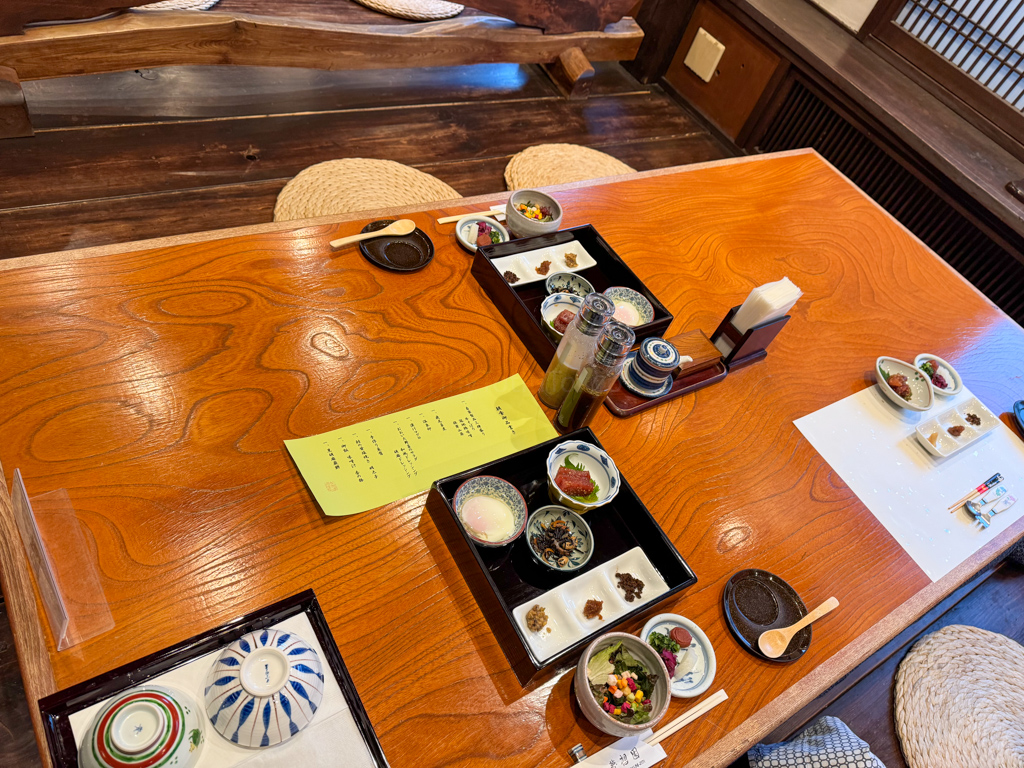
Last Updated on April 10, 2025 by Kay
This post may contain affiliate links, meaning I may earn a small commission on any purchases through those links at zero additional cost to you. Whatever I make goes to keeping this website running and I am forever grateful for the support. See my Privacy Policy for more information.
If you’re considering staying at a ryokan (which you absolutely should because there is no better place to relax in Japan), you might be wondering about meals.
Ryokan serve elaborate, multi-course meals called kaiseki. These kaiseki meals often reflect the seasons in Japan. For instance, in autumn, you’ll be served seasonal fish, and the plates might be decorated with real momiji maple leaves.
In this article, I’ll share what typical kaiseki meals look like at a ryokan, including dinner and breakfast.
If you have allergies or you’re a picky eater, there’s no problem contacting the ryokan in advance (that is, before you book) and asking them if they can change the meal according to your dietary restrictions.
For instance, I really dislike squid (ika), bonito, and sticky (neba neba) food like natto and okra, so before booking, I always ask the ryokan if they can omit these from meals.
In fact, one ryokan made special meals for me when I stayed there for my babymoon in Japan.
Also, keep in mind that since ryokan meals have multiple courses, many dishes are prepared in advance and have to be served at a certain time. This is why you will be asked what time you want your meals, which are during a small timeframe, usually from around 6 PM to 8 PM at the latest.
If you check in late, you might not have many options to choose from when it comes to what time you want your dinner. (For more ryokan tips like this, read this article.)
Your meal will be served either in your room or in the ryokan’s restaurant — it entirely depends on the ryokan.
So now all of that is out of the way, here’s what to expect from a kaiseki ryokan dinner and breakfast in Japan.
Ryokan Dinner Example
Here is a look at our course dinner when we stayed at Yama no Hotel Musouen. This was served in the ryokan’s restaurant.
First, we got some appetizers, which consisted of (clockwise from the top left):
- scallops and rapeseed blossoms
- umeshu (plum wine) — this is served at almost all ryokan at dinner and is the first thing you should have before starting your meal.
- a plate with yanagawa-style eel, myoga (ginger) sushi, bamboo shoots topped with dressing, deep-fried green plum, and seaweed mixed with vinegar
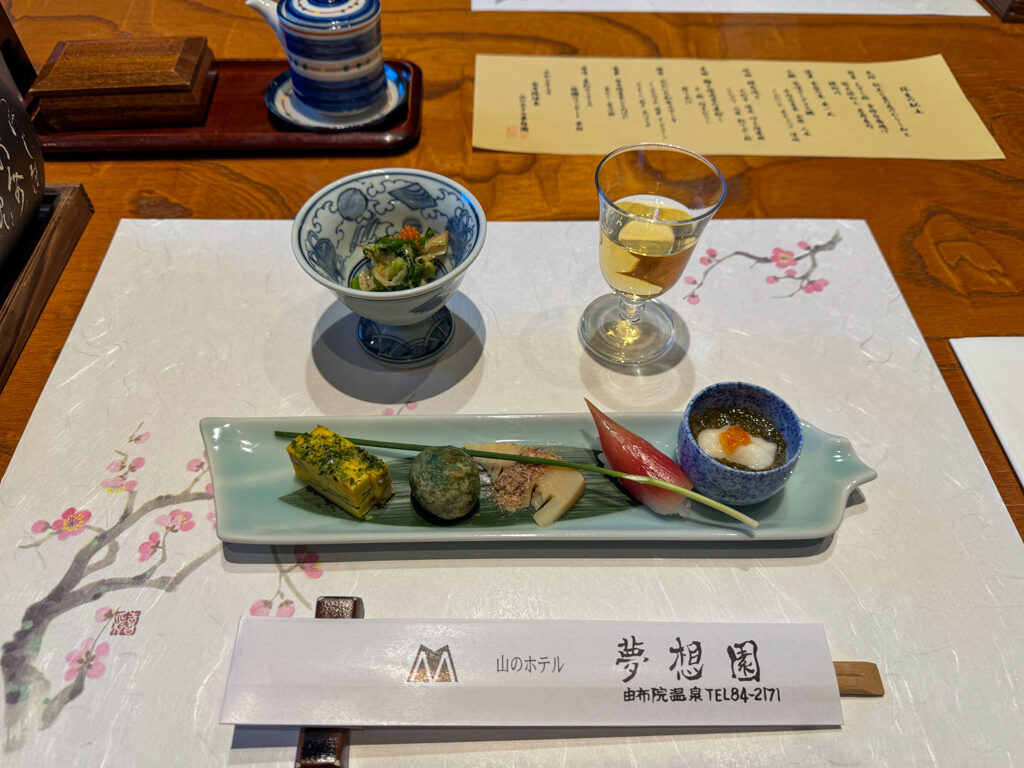
We also each got a small nabe (hot pot) with some Oita wagyu beef wrapped in cabbage and some vegetables in a broth. We needed to let this cook before eating it.
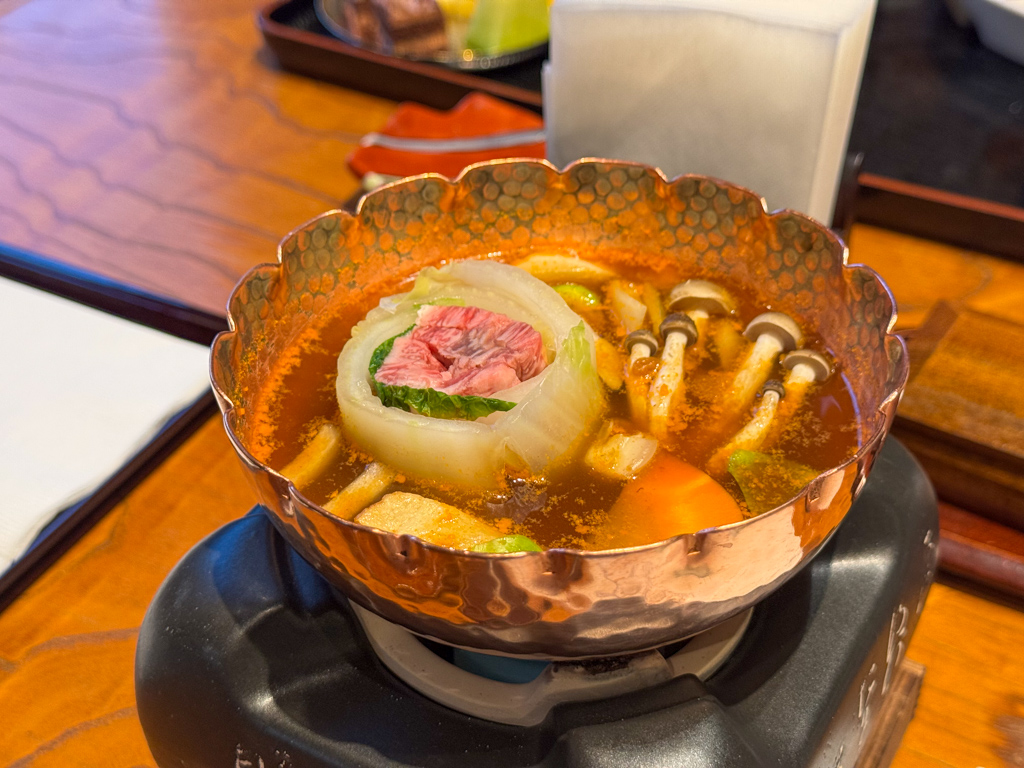
Although I’ve lived in Japan for over fifteen years, this was my first time encountering a hotpot dish like this, as was my Japanese husband’s, so we weren’t sure how long to let it cook. In times like this, we didn’t hesitate to ask the staff, who told us to let it simmer for a few minutes and then break it apart using our chopsticks. Once the meat turned brown, it was ready to consume.
With ryokan dinners, it’s more common to get a small dish of wagyu with a side of vegetables, which is typically cooked on a teppan grill like the following:
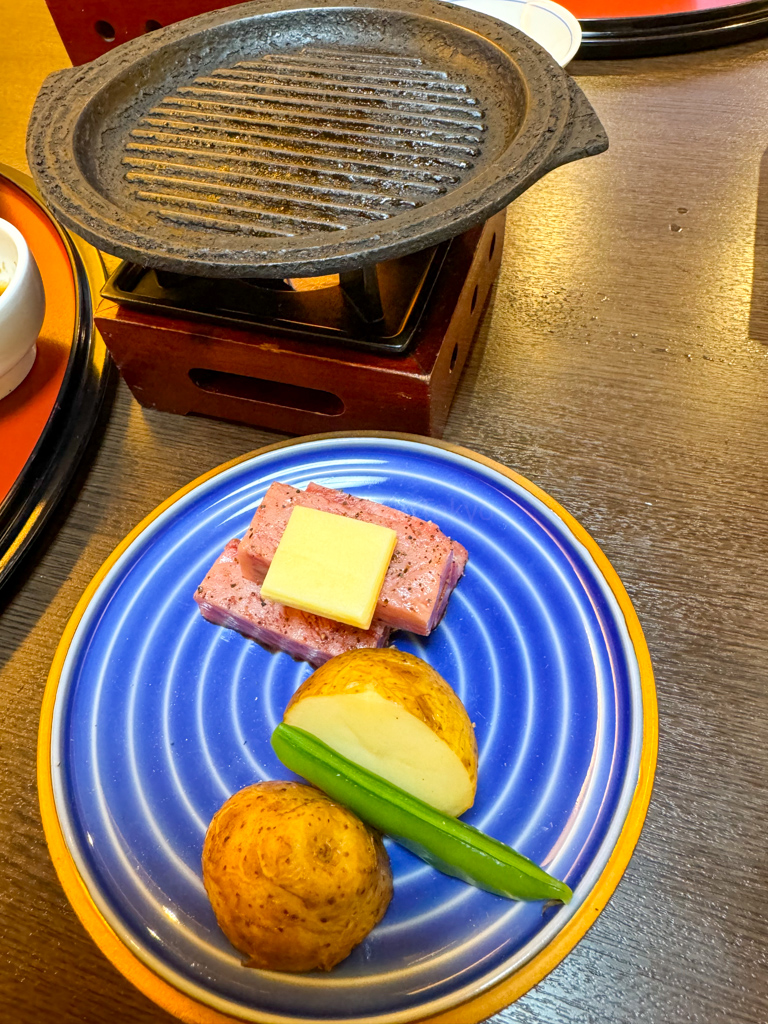
Keep in mind that the image above is from another ryokan we stayed at.
I also ordered a glass of Yufuin beer, and best of all, it was draft. It was so crisp and refreshing that just remembering it makes me want to have another!
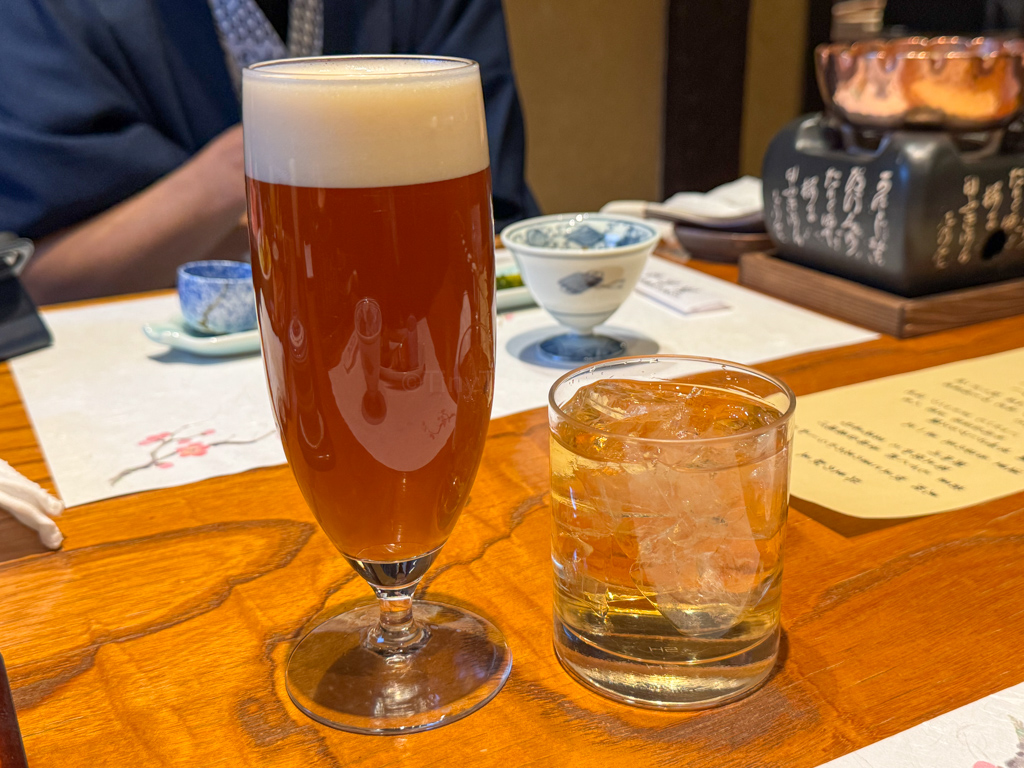
Sometimes I get the local sake instead of beer, especially if the beer available is bottled or a typical draft that you can get anywhere like Asahi or Sapporo.
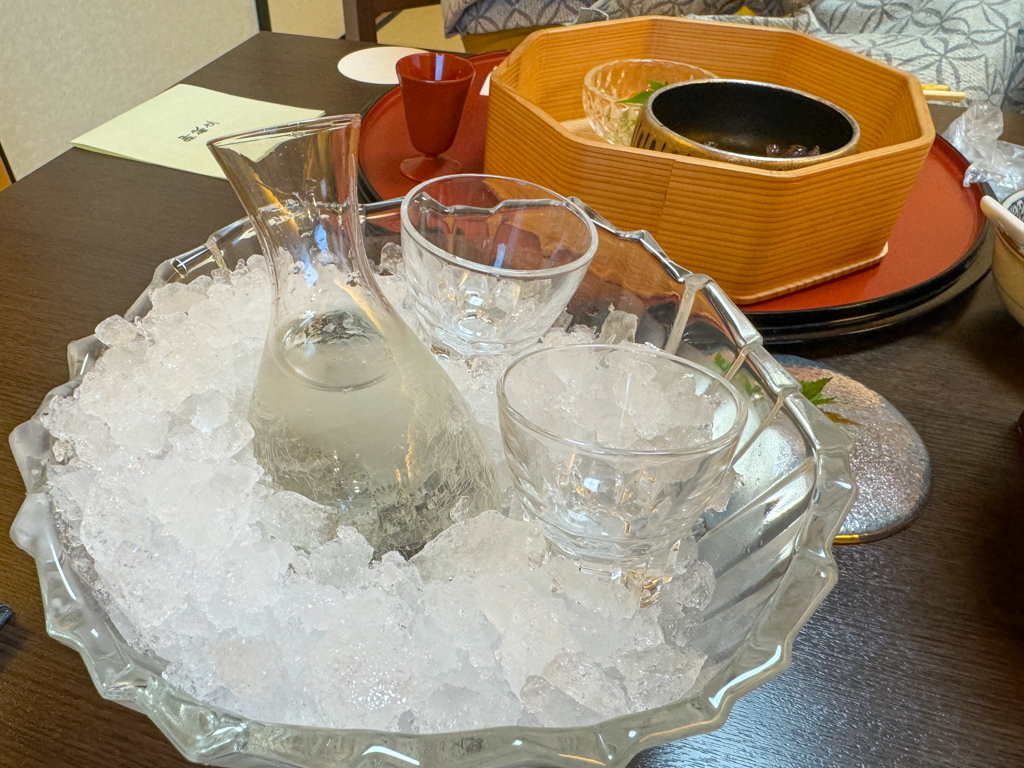
(My husband sadly didn’t get any alcoholic drinks because seasonal allergies had done a number on his senses.)
After we finished our appetizer, we got a plate of fresh seasonal and local sashimi.
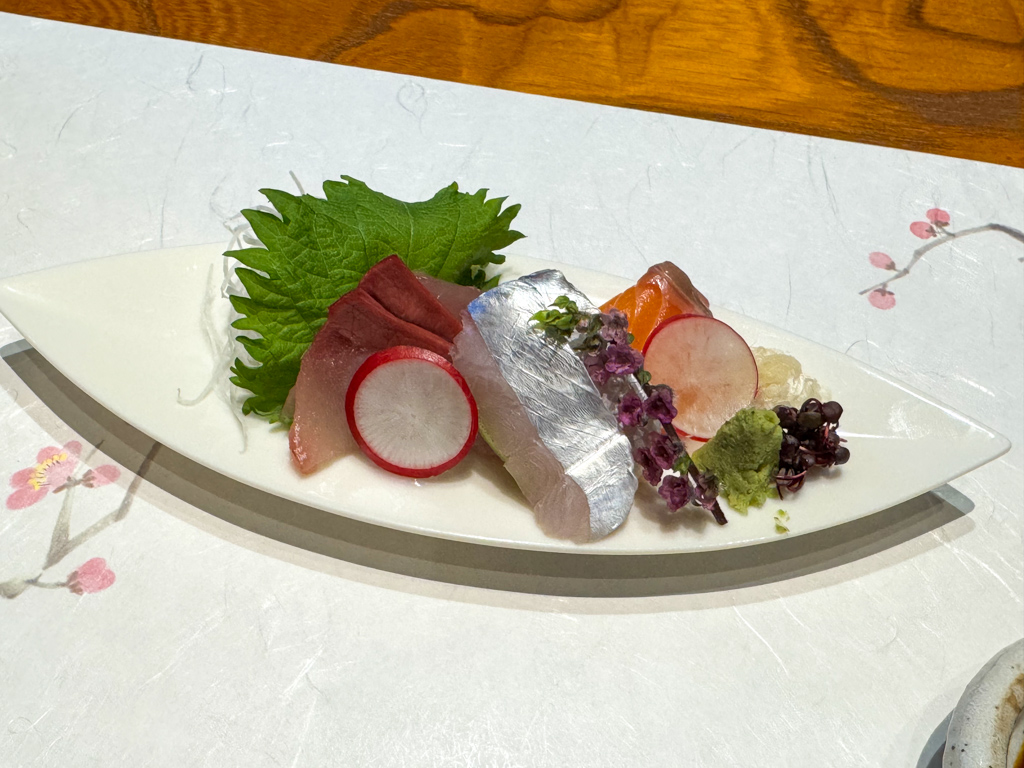
This was followed by a plate of Spanish mackerel (on the left) and simmered shrimp with potato (on the right).
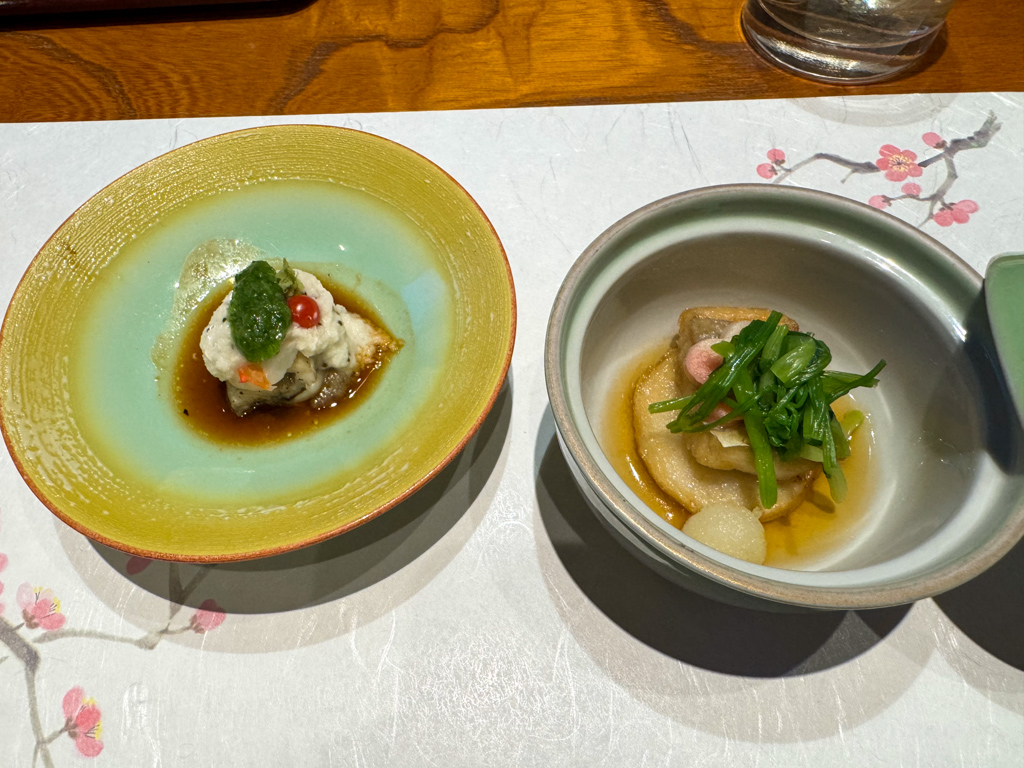
We then got a plate of cooked Oita wagyu beef and seasonal vegetables. It was wonderfully rich, buttery, and downright delicious.
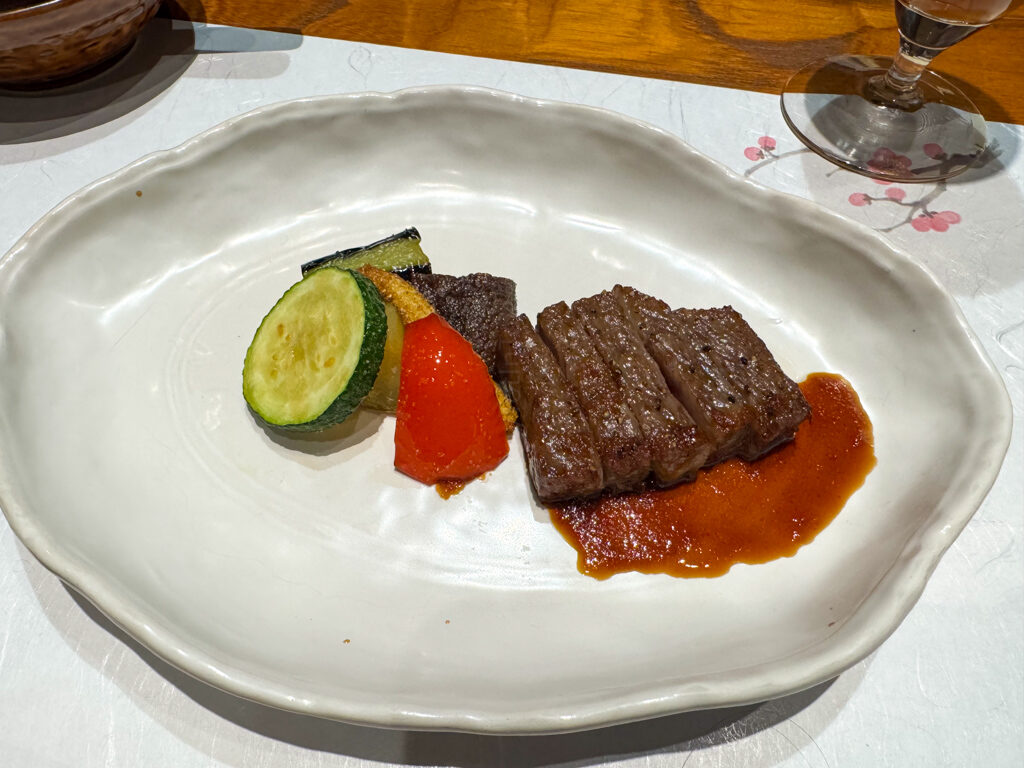
This was served with miso soup and pickled vegetables. And although I don’t have a picture of it, we also got some fresh rice.

For dessert, we enjoyed a plate of cut fresh fruit with a scoop of tiramisu, apple compote, alongside some hot barley tea.
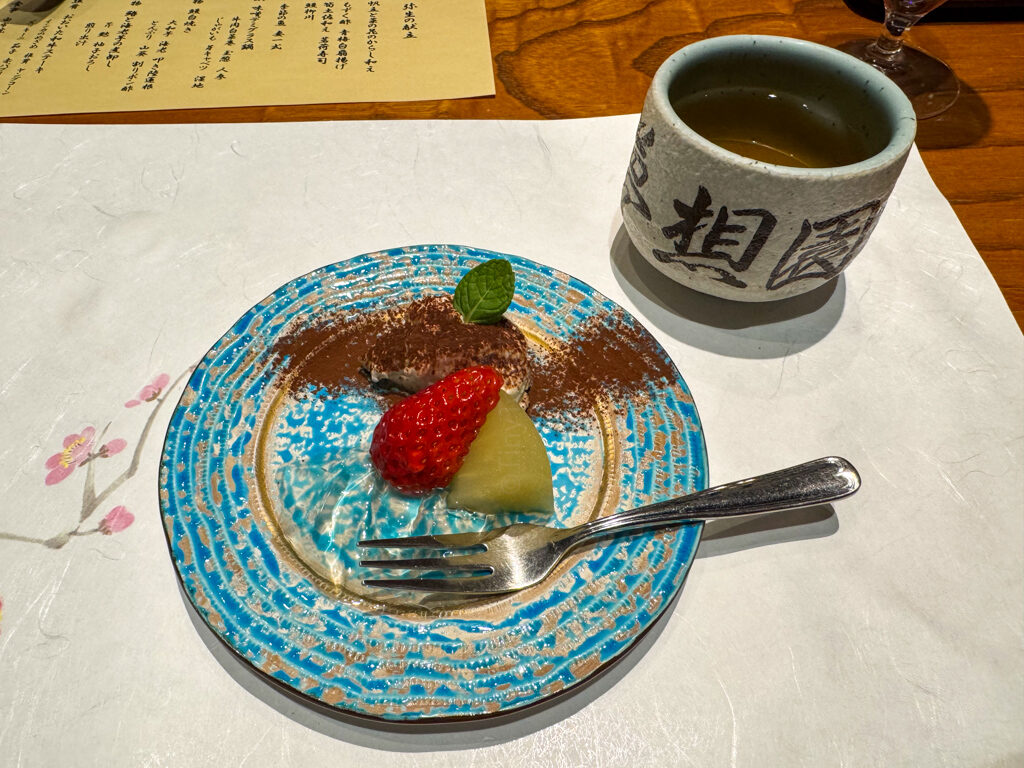
I found everything was just the right amount for dinner and I didn’t feel overly full.
Ryokan Breakfast Example
Similar to dinner, breakfasts at ryokan consist of Japanese food so you’re unlikely to be served bread or scrambled eggs.
If your ryokan serves breakfast in your room, you’ll need to wake up about 30 minutes before your scheduled breakfast time so the staff can put away the futon and prepare the dishes for the meal.
We decided to have breakfast at 7 AM since our daughter wakes up quite early. Unlike with dinner, almost everything was served at once rather than courses given one by one. The portions were also very small.
Starting from the top left:
- A soft-boiled egg (you can pour soy sauce on top of it and enjoy)
- Hijiki seaweed with beans
- Tuna with a sprinkling of ground sesame seeds
- Three different kinds of miso
- A salad
- Assorted pickles
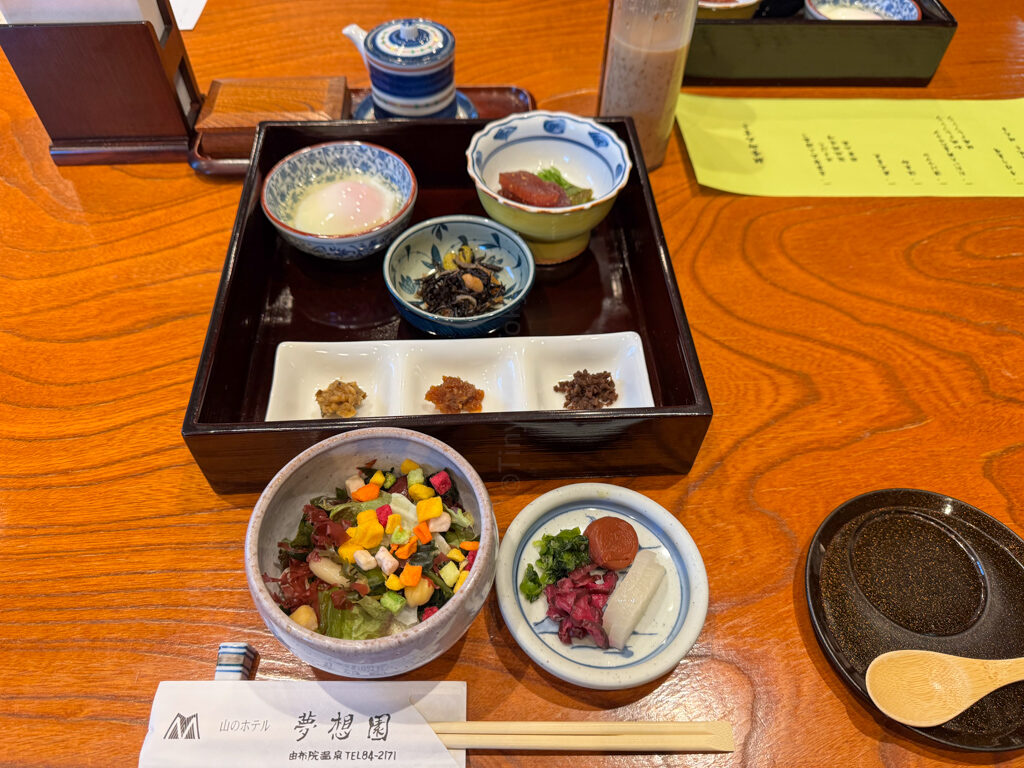
Cooked salmon with some grated daikon radish.
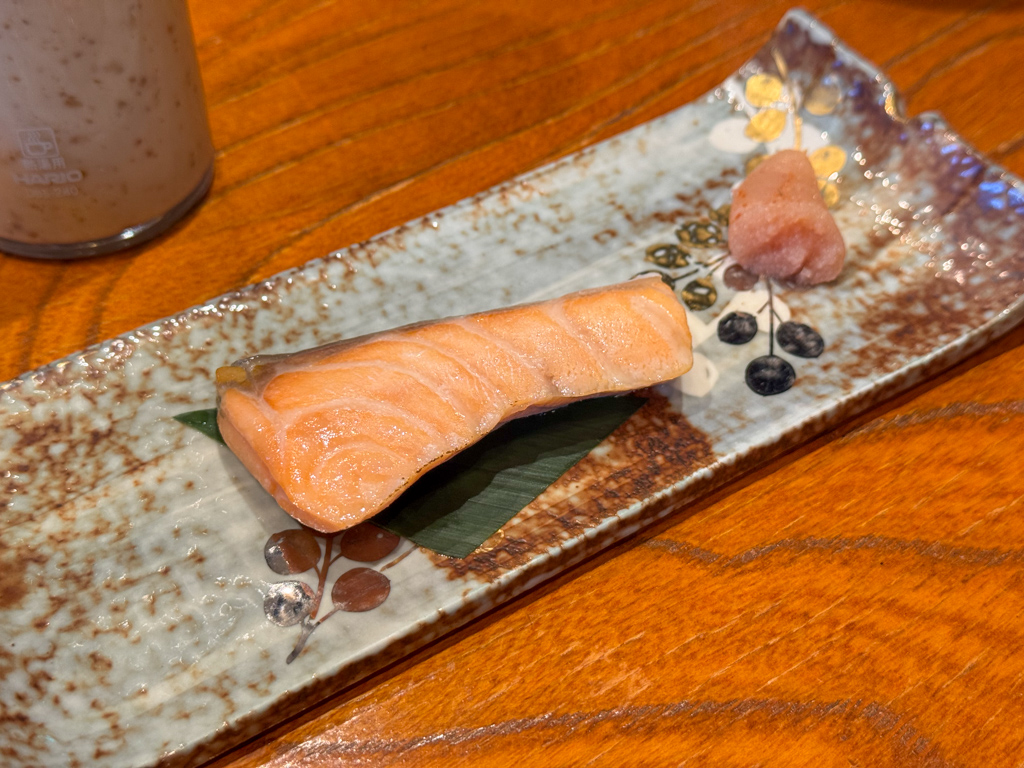
We also got a bowl of fresh rice with this meal.
At the start of the meal, we were asked if we wanted coffee or tea at the end. I asked for a cup of hot coffee and got a delicious jelly dessert topped with ground sesame seeds.

So there you have it!
As you can see, the meals at ryokan are nutritious, delicious, and filling, not to mention beautifully presented. Keep in mind that no two meals at different ryokan are alike, which makes staying at each a unique experience, especially during different seasons.
For instance, during winter, Ryokufukaku in Kinosaki Onsen serves various courses featuring their local crab. I’m talking crab sashimi, grilled crab, crab hot pot, and crab risotto. It was truly one of the most memorable meals I’ve had in Japan.
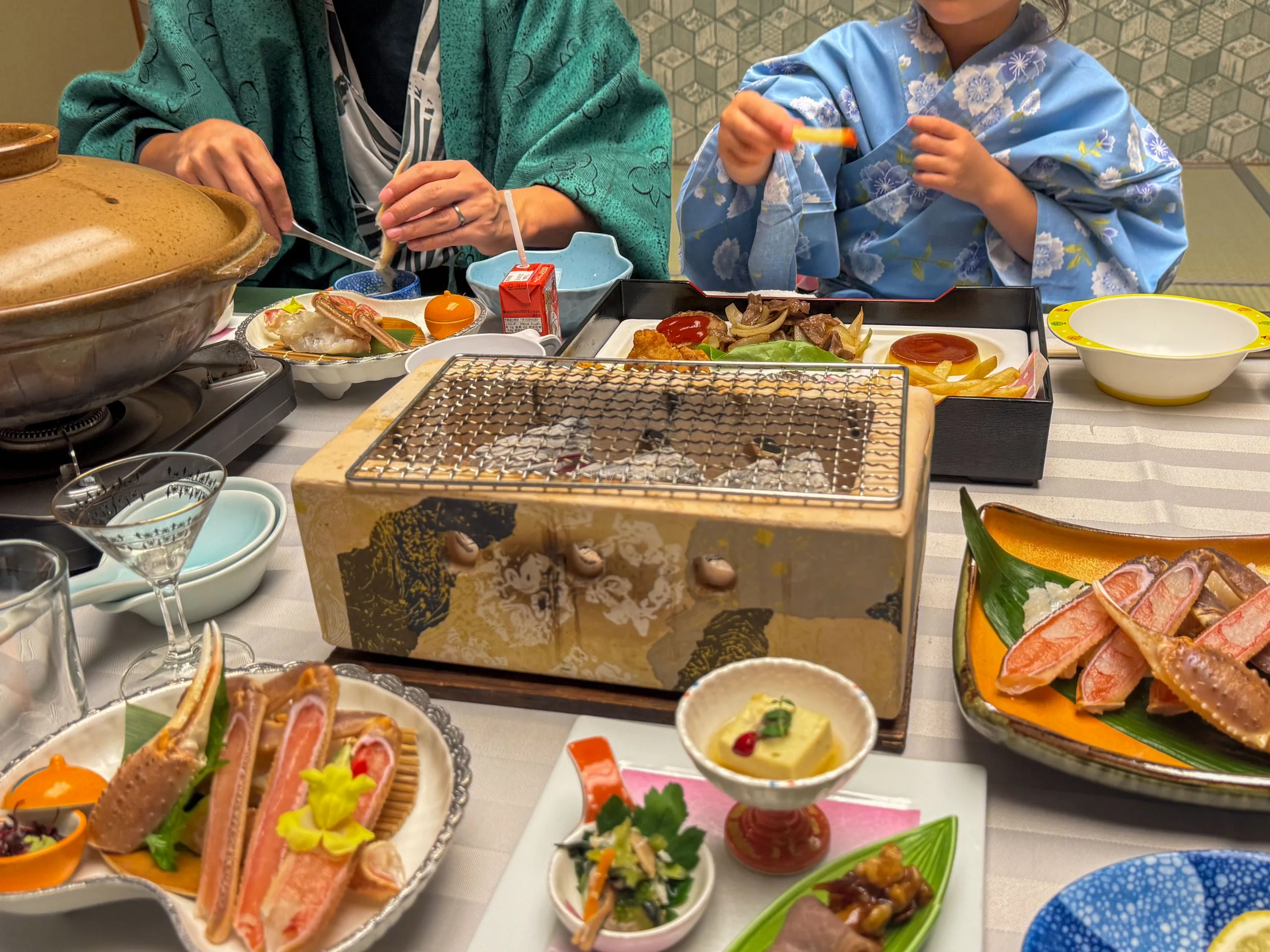
I hope this look at ryokan meals in Japan has been helpful to you when it comes to understanding what you might be served for dinner and breakfast.
Happy eating!

